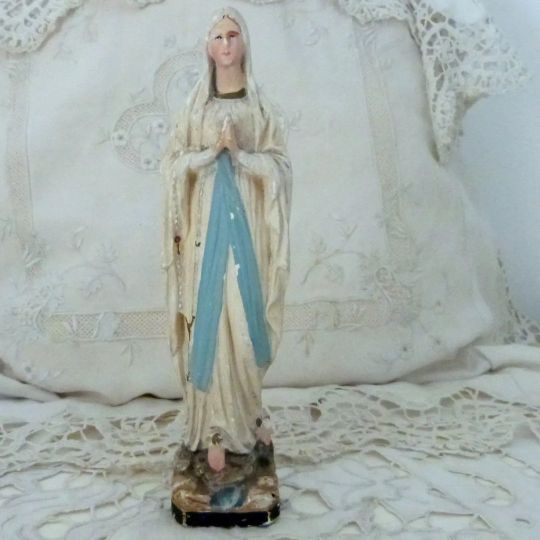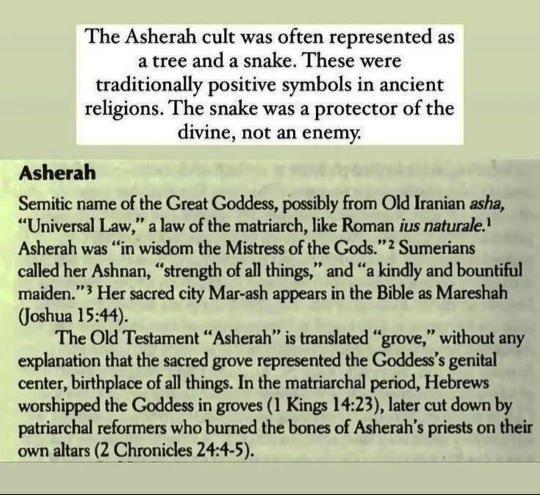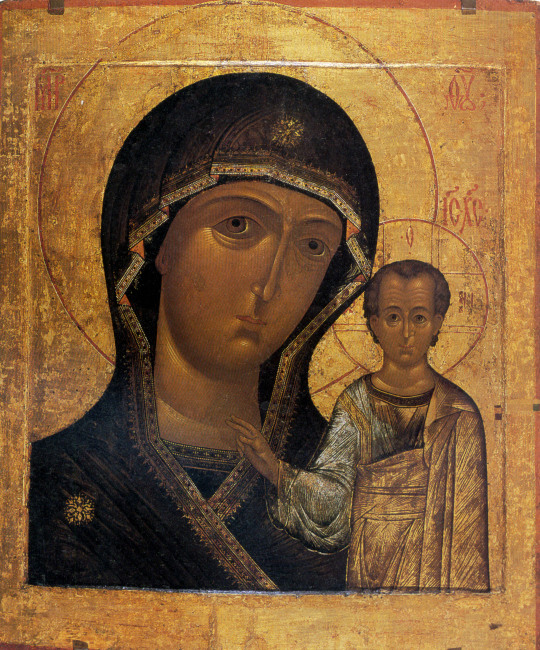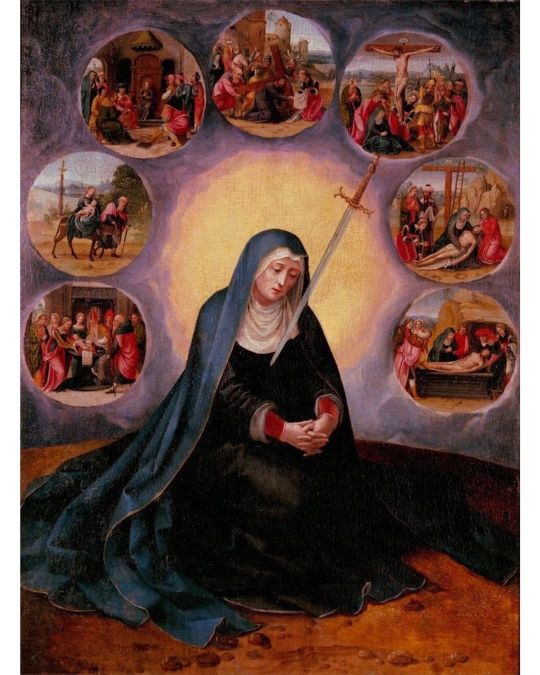#holymother
Text

“The Unexpected Joy” icon of the Mother of God is one of the most precious gems of our antique Russian icon collection. The image dates back to the 19th century and encompasses the scenes of the Old Testament prophecies and Marian Feasts pictured around the central part of the icon with the Holy Mother and Jesus Christ. It is valued for its high-class artistry and distinct concept. Visit our blog to find out more about the rich history behind the piece and the origin of its name.
https://russianicon.com/the-unexpected-joy-icon-of-the-mother-of-god/
#unexpectedjoy#motherofgod#iconcollection#holymother#virginmary#jesuschrist#babyjesus#maryandjesus#russianicons#russianicon#antiqueicons#19century#19thcentury#christianity#orthodoxy#christianart#orthodoxart
21 notes
·
View notes
Photo

#FolkloreThursday: Part 2/3: Memorial of Our Lady of Sorrows (September 15) Five years later, they took up the sorrows of Mary, standing under the Cross, as the principal devotion of their order. Over the centuries several devotions, and even orders, arose around meditation on Mary's Sorrows in particular. The Servites developed the three most common devotions to Our Lady's Sorrows, namely the Rosary of the Seven Sorrows, the Black Scapular of the Seven Dolours of Mary and the Novena to Our Sorrowful Mother. The rosary consists of a chaplet of seven septets of beads (upon which is said an Ave), separated by one bead (on which is prayed a Pater Noster. Meditations for each dolor were composed by Pope Pius VII in 1818. The Black Scapular is a symbol of the Confraternity of Our Lady of Sorrows, which is associated with the Servite Order. Most devotional scapulars have requirements regarding ornamentation or design. The devotion of the Black Scapular requires only that it be made of black woollen cloth. From the National Shrine of Saint Peregrine spread the Sorrowful Mother Novena, the core of which is the Via Matris.The core of the prayers in the novena is the Via Matris. #folklorethursday #mamamary #mothermary #ourladyofsorrows #holymother #catholique #catholiques #romancatholic #romancatholicchurch #catholicmystics #catholicworld #intothemystic #catholic #catholicism #materdolorosa #Spiritique #mindfulness #Spiritual #Spirituality #mystical #mystique #mystic #mysticisim #renaissance #renaissanceart #folk #folklore #folkspirits #folkmystic https://www.instagram.com/p/Cih8saxJfyn/?igshid=NGJjMDIxMWI=
#folklorethursday#mamamary#mothermary#ourladyofsorrows#holymother#catholique#catholiques#romancatholic#romancatholicchurch#catholicmystics#catholicworld#intothemystic#catholic#catholicism#materdolorosa#spiritique#mindfulness#spiritual#spirituality#mystical#mystique#mystic#mysticisim#renaissance#renaissanceart#folk#folklore#folkspirits#folkmystic
7 notes
·
View notes
Text

You have to adjust yourself to all conditions. The Master used to say sha, sha, sha—exercise patience in everything. The Master is looking after everything.
HOLY MOTHER SRI SARADA DEVI
0 notes
Photo

#rihanna glorifies the #holymother into the #scarletwhore & instagram wants to censor my opinion... 🖕 @instagram @meta #instagram #meta #instacensorship #metacensorship #socialmedia #censorship #fuckcensorship #fucksocialmediacensorship #fuckinstagram #fuckmeta #1984 #dystopian #violation of my #freedomofspeech https://www.instagram.com/p/Coss9tly0NEJkrNbkpAejXPtX6BA08LXw6FhWI0/?igshid=NGJjMDIxMWI=
#rihanna#holymother#scarletwhore#instagram#meta#instacensorship#metacensorship#socialmedia#censorship#fuckcensorship#fucksocialmediacensorship#fuckinstagram#fuckmeta#1984#dystopian#violation#freedomofspeech
0 notes
Photo

in my shop #boutiqueetsy : French Antique religious Holy virgin Mary statue of Lourdes madonna madonne our mother lady of Lourdes saint signed statue w rosary cross #religiousstatue #ourladyoflourdes #religiousantiques #holymother #frenchreligious #devotionalstatue #lourdesstatue #lourdessouvenir #madonnastatue https://etsy.me/3CA7JOx https://www.instagram.com/p/CnMRUF2owCO/?igshid=NGJjMDIxMWI=
#boutiqueetsy#religiousstatue#ourladyoflourdes#religiousantiques#holymother#frenchreligious#devotionalstatue#lourdesstatue#lourdessouvenir#madonnastatue
1 note
·
View note
Text
The Search for Home, and Our Holy Mother the Hearthstone (My Sermon for the Feast of Our Lady of Guadalupe)
On this blessed Fore-Feast of Our Lady of Guadalupe, I want to share just a little bit with you about how and why La Virgencita has become for me a very dear focus of devotion. I don’t usually share in a very personal way like this from the pulpit, but in this case it’s what the Holy Mother has put on my heart to do, so I’m rolling with it.
During the years I lived and served in the Church in Colorado, I became very acquainted with the Land of Northern New Mexico, and the landscape, the rich history, and heritage quickly became very important parts of my life. On one of my first road trips there, I visited The Chapel of St. Jerome in the indigenous community of the Taos Pueblo. There was no one else around and I stepped inside the little adobe chapel, and was all at once struck very deeply: all around were images of the Holy Mother; all over the altar were images of her: as Corn Mother, Virgin Mother, Earth Mother. There were only a couple of male images I could find in the whole chapel, in fact, and they were small.
I sat there for a long time, in awe, just praying and reflecting and absorbing the implications of this sacred place, this sanctuary of the Mother. And something broke open in me. It was as if the Holy Mother, who has been central in my heart since childhood, was suddenly revealing something new in me: new pathways of devotion, new understandings of religious history—a new vision of her in an ancient form new to me, a new mantle of the one who is always present, but often veiled. And here, at last, in the Western world was a place where I could feel the same spirit of devotion I had for her, expressed in an authentic, deeply rooted, and living sacred space.
And when I walked out of that chapel and continued exploring the region of Northern New Mexico, I realized that this image of the Mother—my own Mother, the one who has guided my whole life, and to whom my whole heart is given over in helpless devotion—she was everywhere. She was suddenly everywhere around me in this form of our Lady of Guadalupe. And I don’t just mean that she was everywhere in a metaphysical sense (I’d already long known that and felt that), but I suddenly found myself in a geographical region where I had the possibility of noticing that outwardly, physically, in name and form, she was everywhere around me. In little roadside shrines; on the sides of buildings; in stores and cafés; in the names of streets and villas. And I found in this a very deep recognition of something so central, so sacred, and so true in my own heart: a mystery I had always lived internally, but now, here, in the United States (surprisingly), where I’d never really felt at home, I was at last seeing that inner reality reflected back in the external world. And that felt like a most tender and welcome taste of home—something my soul had thirsted for.
So of course I kept going back again and again to Northern New Mexico over the years: I didn’t want to leave that place, because the Mother of my heart was everywhere depicted there, in rich, beautiful vibrancy—not suppressed, as she has often been in many times and places, but openly embraced and celebrated. The truth of her presence at last felt fully acknowledged outside my own private space of devotion. As some of you probably know, there are very few, if any, other places where this is so in the Western world—certainly in the United States. Of course, it is this way in many parts of Mexico, in certain parts of India—but in Europe and North America, no. There’s a void, I’ve always felt, an absence of the Mother’s radiance in society and material culture.
My ancestral culture and inheritance is Celtic—mostly Gaelic. And in Gaelic culture, we also have a long tradition of honoring the sacred feminine, going back deep into our history, long before the coming of Christianity. But it has been mostly buried by centuries and centuries of colonialism. Because of this devotional flame that was kindled in me so early on, it’s been a central focus for me since adolescence to explore how my own ancestral culture embodied and expressed the sacred feminine. And, eventually becoming a priest and a monastic in Catholic Christian tradition, here in the Episcopal Church, it became a central focus of mine to locate her in this context, too, excavating the deepest layers of the tradition, finding those ancient precedents and bringing them back into the light of day in our context—hopefully reminding us all that she’s there and always has been there, albeit hidden and often suppressed.
There are many prisms through which each of us can view our personal journeys in this life. One of those prisms for me is this search for a place of resonance and clear reflection where the light and life of the Holy Mother is reflected back to my eyes: a place where that knowing, that deep devotion inside, can find a hospitable home in the outward world. And since that’s a home I’ve always found to be non-existent in the environments I’ve inhabited, I have had to try to make it myself, to shape it from raw earth, as it were. It’s as if there’s something deep in me that can’t rest easy until a lived expression of devotion to her—in any or all of her manifold forms—is present and visible in the world around me.
This would no doubt sound strange to many people. Though at the deepest level this endeavor has been about bringing her love and vibrancy and wisdom back into collective view again in the Western context, in whatever small ways that might be possible. It’s a sort of ‘mission’, I guess you could say, to bring her light back into the world a little bit more. This mission has sometimes been covert, out of necessity; it has sometimes been subversive; and I’ve been known to employ a good old fashioned ‘trojan horse’ here and there to further it. Which I make no apologies for.
There’s a reason the Holy Mother has often been described as the ‘homing star’, the navigating star, ‘star of the sea’, or, ‘the star that saves’: for some, at least, she’s the principal lantern: our guiding light in this world. And without her we are lost. Without her we can’t make a home. Without her no home is really possible.
This issue of home is a difficult one, especially in today’s world, where so many of us are displaced, and have been alienated from our indigenous homelands, from the Earth where our Ancestors’ bones have been laid to rest for century upon century. Many of us today are like cultural orphans. And we all have to struggle with these questions in our own ways: What is ‘home’? Can we even truly have a home on this Earth? Or can we find one in this era of history? Can we build it ourselves, or with a family or small community, or does it take a whole cultural context, a tribe, a village? And, if we don’t have any of those things, how can we at least attempt to build a semblance of it on our own? What are the essential ingredients? Can it last?
I’ve studied quite a bit of religion over many years, in a fairly deep way, and I can tell you that all over the world, in many of the oldest cultures, the traditional cultures, this Mother I speak of, whom we honor today as the Virgin of Guadalupe, is found—wearing different masks, different garments, expressing the hearts of different people—to be the proverbial hearthstone: the foundation that’s needed to build anything remotely resembling a home. And I find myself in strong alignment with that shared conclusion.
I would even go so far as to say that religion has failed where it has lost the Mother. Because the Mother is our life-line, our very blood and bones. Without the Mother, there is no life. The Mother is life. Whatever we name her, this I think we can be sure of. Without the Mother, there can be no home, because without her there is no birth, no generation, and no Mystery.
She uniquely manifests to us here and now, as Our Lady of Guadalupe, Mother of the Americas. And she appears to her children all over the world in diverse and wondrous forms. Let us be grateful today, with our whole hearts, for this particular form, this particular appearance to us of her infinitely majestic beauty.
May she always guide and protect us—she who in truth is nearer to us than our own breath. And may we keep the flame of her presence always burning in our hearts and minds. Amen.
#brendanelliswilliams#fatherbrendan#spirituality#spiritualjourney#spirituallife#spiritualawakening#spiritualdirection#homily#sermon#ourlady#holymother#mothermary#guadalupe#ourladyofguadalupe#lavirgencita#home#catholic#interfaith#Interreligious#priest#monk#monastic#religiousstudies#religiouslife#religion#theology#mysticaltheology#divinefeminine#sacredfeminine
0 notes
Photo

More scenes from "#TheSecondComing of the #CambrianExplosion," a series of art experiments with #Midjourney in which I'm playfully exploring the shape of #evolution as a process of #recombinant and #branching creativity by replaying a major moment in #prehistory by ironically infusing insentient spreadsheet shenanigans (evolution in general, whether in meat or in software) with "#IntelligentDesign" which in this case is a kind of theist animal husbandry whereby I pick my favorites from each new generation of four #AIart "offspring" and breed THOSE, repeating for dozens of generations. I'm finally at the point where #diversity of nonetheless similar image outputs is starting to overtake #disparity of "body plans" between images in the same cohort... More writing on this to come, along with details about how to back this project! 🌊 #conceptualart #generativeart #ai #painting #religiousart #postmodernart #iconography #holymother #hallucigenia (at Santa Fe, New Mexico) https://www.instagram.com/p/CfKjneTJ-cA/?igshid=NGJjMDIxMWI=
#thesecondcoming#cambrianexplosion#midjourney#evolution#recombinant#branching#prehistory#intelligentdesign#aiart#diversity#disparity#conceptualart#generativeart#ai#painting#religiousart#postmodernart#iconography#holymother#hallucigenia
0 notes
Photo

Church in St. Niklaus today from Wikipedia. Orally transmitted from #Oberwallis, or #Valais. There was a small stone statue of Mary stands high up on a rough rock wall of the Rätiberg behind St. Niklaus in Visperthal. Her eyes are barely visible. Once it stood at the bottom of the road in a chapel that the passersby could pray before. The chapel is now empty. But once it happened that a profane man, whose desires had been unheard of, took dung and pelted that at the holy image. The image began shedding tears. But when the man repeated the sacrilege again, the image hurried away from the access of people. It went high up in the wall and did not want to go down to pay heed to people’s prayers. Climbing the rock and retrieving it was completely impossible. Rather, the people thought that they could take it down from the top of the summit. They scaled the mountain, entwined a man with strong knots of a rope so that he can float downwards till he come before the image and safely take it down. But while descending, the rope which held him up was getting thinner and thinner towards the bottom. By the time he reached before the image, it became as thin as hair. The situation terrified the people waiting. The man called them to tell that they should pull him for God’s sake, so that he could survive. So the people standing on the summit pulled him again and the ropes became stronger, keeping him safe. Henceforth, people had to stand at the feet of the image of the Holy Mother and never reach her again. *Story of #miracle. #Rätiberg behind St. Niklaus valley in #Swiss Alps is a rocky area. St. Niklaus, now a famous trekking destination has a population of around 2100, most of whom are Roman Catholic. The valley is also well known for being the home of famous Swiss mountain-guide families. The way people try to scale the high mountain in the story, shows us the practice of mountaineering in this region. The story must have evolved after the spread of #Christianity here, but when? That is difficult to define. #folktale #belief #mothermary #holymother #mothergoddess #romancatholic #switzerland #sagen #grimms #sin #punishment #rockclimbers #regionalhistory https://www.instagram.com/p/Cd7H-rjrj-y/?igshid=NGJjMDIxMWI=
#oberwallis#valais#miracle#rätiberg#swiss#christianity#folktale#belief#mothermary#holymother#mothergoddess#romancatholic#switzerland#sagen#grimms#sin#punishment#rockclimbers#regionalhistory
1 note
·
View note
Text
and if i make a sideblog for smut...
8 notes
·
View notes
Note
What are the current active blogs?
That I follow,
Islestea
Holymother-k
Crosby-interesting
Hockeygossip101
Toews-Kane-interesting
18 notes
·
View notes
Text

🌳🌲🌴🐍
The GREAT MOTHER/GOD/Matriarchy
God's Secret 🤐🤫😶 ASHERAH/Isis/APHRODITE/GODDESS of 10000 Names
The High P R I E S T E S S
The Queen of Heaven
"I was so much more than I am now, little one. I was the first among the first! Goddesses envied my beauty, while gods drooled for lusting after me. I was not a goddess, I was the Goddess. The first after Yaldabaoth. But, everything changed when the Enlightened One was born. Gods were abandoned, deities that were once nearly omnipotent were reduced to mere demons forced to beg for worship"
~ ASHERAH🌹
Genesis
In the beginning, there was nothing but darkness. An endless, shapeless, and formless void of nothingness. The only things that existed at the time was God and Asherah alongside Night and Chaos whom were the void. Asherah was present when God declared "Let There Be Light!" and when the light cast a shadow upon the seas of Chaos, the shadow took the form of Azathoth which became the Shadow of God.
More : https://gods-and-demons.fandom.com/wiki/Asherah
🔮🌀✨👑♀️#Sophia #MaryMagdelena #Asherah #goddess #queenOfHeaven #Matriarch #GoldenWomb #EternalWombverse #EternalSHE #Herstory #DivineFeminine #SacredFeminine #HolyMother #SacredProstitute #SacredSexuality #SacredHeart #CosmicPowHER #HeavenOnEarth #NewEarth #Aphrodite #isis #GoddessOf10000names #Azathoth #Astarte
4 notes
·
View notes
Text

Did you know that the original icon of Our Lady of Kazan was brought to Russia from Constantinople? It happened in the 13th century, and in the 15th century, when the Khanate of Kazan was established, the image of the Virgin Mary with Jesus disappeared for more than a hundred years. It is also believed that the original piece was stolen and possibly destroyed in 1904. The thieves of the holy icon declared that it was cut to pieces and burnt, as what they coveted was actually the icon’s gold frame.
#virginmary#holymother#jesuschrist#christ#ourladyofkazan#ourlady#holicons#russianicon#russianicons#russianiconcollection#christianart#orthodoxart#orthodoxy#christianity#kazan
26 notes
·
View notes
Photo

[FINAL PART] The Seven Sorrows of the Blessed Virgin Mary The Seven Sorrows (or Dolors) are events in the life of Mary that are a popular devotion and are frequently depicted in art. These Seven Sorrows should not be confused with the five Sorrowful Mysteries of the Rosary. Traditionally, the Seven Sorrows are: 1. The Prophecy of Simeon in Luke 2; 2. The Flight into Egypt in Matthew 2; 3. The Loss of the Child Jesus in the Temple of Jerusalem, also in Luke 2; 4. Mary's meeting Jesus on the Via Dolorosa, the Fourth station of the Cross not found in Bible; 5. The Crucifixion of Jesus on Mount Calvary in Matthew 27, Mark 15, Luke 23, and especially John 19; 6. Jesus is Taken Down from the Cross in Matthew 27, Mark 15, Luke 23, and John 19; 7. The Burial of Jesus by Joseph of Arimathea also in Matthew 27, Mark 15, Luke 23, and John 19 #folklorethursday #mamamary #mothermary #ourladyofsorrows #holymother #catholique #catholiques #romancatholic #romancatholicchurch #catholicmystics #catholicworld #intothemystic #catholic #catholicism #materdolorosa #Spiritique #mindfulness #Spiritual #Spirituality #mystical #mystique #mystic #mysticisim #renaissance #renaissanceart #folk #folklore #folkspirits #folkmystic #sevensorrows https://www.instagram.com/p/Cih9qd7Jv14/?igshid=NGJjMDIxMWI=
#folklorethursday#mamamary#mothermary#ourladyofsorrows#holymother#catholique#catholiques#romancatholic#romancatholicchurch#catholicmystics#catholicworld#intothemystic#catholic#catholicism#materdolorosa#spiritique#mindfulness#spiritual#spirituality#mystical#mystique#mystic#mysticisim#renaissance#renaissanceart#folk#folklore#folkspirits#folkmystic#sevensorrows
0 notes
Text

Spiritual practices are meant to keep the mind steady at the feet of God, to keep it immersed in His thought. Repeat His name.
HOLY MOTHER SRI SARADA DEVI
0 notes
Text

Send from Sansgreet Android App. Sanskrit greetings app from team @livesanskrit .
It's the first Android app for sending @sanskrit greetings. Download app from https://livesanskrit.com/sansgreet
Sarada Devi.
Sarada Devi (1853 –1920), born Kshemankari/ Thakurmani/ Saradamani Mukhopadhyay, was the wife and spiritual consort of Sri Ramakrishna, a nineteenth-century Hindu mystic and saint. Sarada Devi is also reverentially addressed as the Holy Mother (Sri Sri Maa) by the followers of the Sri Ramakrishna monastic order. Sri Sarada Devi or Sri Sri Maa is one of the notable woman saints and mystics of the nineteenth century. She paved the way for the future generation of women to take up monasticity as the means and end of life. In fact the Sri Sarada Math and Ramakrishna Sarada Mission situated at Dakshineshwar is based on the ideals and life of Sri Sri Maa. Sri Sarada Devi played an important role in the growth of the Ramakrishna Movement.
#sansgreet #sanskritgreetings #greetingsinsanskrit #sanskritquotes #sanskritthoughts #emergingsanskrit #sanskrittrends #trendsinsanskrit #livesanskrit #sanskritlanguage #sanskritlove #sanskritdailyquotes #sanskritdailythoughts #sanskrit #resanskrit #srisaradadevi #sriramakrishna #saint #hindusaint #hinduism #saradamanimukhopadhyaya #holymother #srisrimaa #saradamath #bengal #kolkata #bagbazar #hindu #mother #celebratingsanskrit
#greetingsinsanskrit#sanskritgreetings#sanskrittrends#trendsinsanskrit#livesanskrit#sanskrit#celebratingsanskrit#incredibleindia
0 notes
Photo

just listed #boutiqueetsy : Tall French Antique religious Holy virgin Mary statue Lourdes stone madonna our mother lady of Lourdes saint, numbered statue w rosary cross #ourladyoflourdes #religiousstatue #religiousantiques #holymother #frenchreligious #lourdessouvenir #lourdesstatue #devotionalstatue #madonnastatue https://etsy.me/3hmj1OJ https://www.instagram.com/p/CkqHSEbIVM-/?igshid=NGJjMDIxMWI=
#boutiqueetsy#ourladyoflourdes#religiousstatue#religiousantiques#holymother#frenchreligious#lourdessouvenir#lourdesstatue#devotionalstatue#madonnastatue
0 notes